-

18.11.22 - Abraham Cruzvillegas in Okayama Summit 2022
Abraham Cruzvillegas is participating in the Okayama Art Summit 2022, Do We Dream Under the Same Sky. His works includes site specific installations, performances, and a contest with local young calligraphy artists.
Exhibition dates: 30 September - 27 November 2022
Tenjinyama Cultural Plaza
and
Okayama Shrine
Okayama Prefecture
Japan
-

12.10.22 - Now open: Thomas Dane Gallery at Frieze London 2022
Frieze London, Stand E5
For Frieze London 2022 Thomas Dane Gallery will present a project organised entirely by artist Anthea Hamilton. The booth will be an evolution of her signature approach to exhibition making, seen most recently in her show at Museum of Contemporary Art Antwerp, which brings together different disciplines such as fine art, design, and museology, blurring the lines and boundaries between walls, floor, furniture, and artworks, to create a complete environment for the booth.
List of artists:
Hurvin Anderson
Lynda Benglis
Abraham Cruzvillegas
Alexandre da Cunha
José Damasceno
Anya Gallaccio
Luigi Ghirri
Anthea Hamilton
Mumtaz Karimjee
Barbara Kasten
Rita Keegan
Phillip King
Ella Kruglyanskaya
Jean-Luc Moulène
Magdalene A. N. Odundo
Dana Schutz
Amy Sillman
Caragh Thuring
Nancy Willis
Anthea Hamilton will be in conversation as part of the Frieze Masters Talks programme at 3pm on Sunday 16 October at Studio Voltaire. -
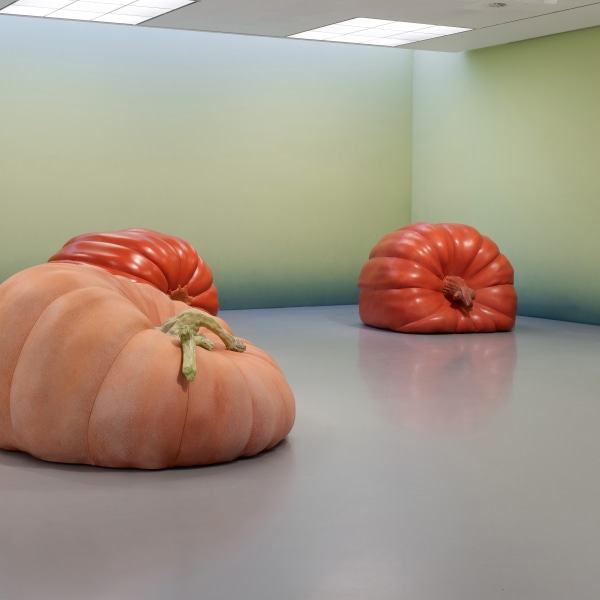
6.10.22 - Thomas Dane Gallery at Frieze London 2022
Stand E05
For Frieze London 2022 Thomas Dane Gallery will present a project organised entirely by artist Anthea Hamilton. The booth will be an evolution of her signature approach to exhibition making, seen most recently in her show at Museum of Contemporary Art Antwerp, which brings together different disciplines such as fine art, design, and museology, blurring the lines and boundaries between walls, floor, furniture, and artworks, to create a complete environment for the booth.
Hamilton has selected works from across the gallery programme plus a special group of invited artists.
List of artists:
Hurvin AndersonLynda Benglis
Abraham Cruzvillegas
Alexandre da Cunha
José Damasceno
Anya Gallaccio
Luigi Ghirri
Anthea Hamilton
Mumtaz Karimjee
Barbara Kasten
Rita Keegan
Phillip King
Ella Kruglyanskaya
Jean-Luc Moulène
Magdalene A. N. Odundo
Dana Schutz
Amy Sillman
Caragh Thuring
Nancy Willis
Preview day: 12 OctoberPublic days: 13 - 16 October
Frieze Masters Talks
Anthea Hamilton will be in conversation as part of the Frieze Masters Talks programme at 3pm on Sunday 16 October at Studio Voltaire.
Studio Voltaire1A Nelsons Row
London SW4 7JR
-

25.8.22 - Frieze Seoul
Thomas Dane Gallery at Frieze Seoul
Stand: A16
Showing works by Hurvin Anderson, Lynda Benglis, Walead Beshty, Glenn Ligon, Abraham Cruzvillegas, Alexandre da Cunha, Anya Gallaccio, Anthea Hamilton, Barbara Kasten, Ella Kruglyanskaya, Luisa Lambri, Glenn Ligon, Steve McQueen, Jean-Luc Moulène, Catherine Opie, Amie Siegel, Akram Zaatari.
Preview days: 2 - 3 September
Public days: 4 - 5 September
513 Yeongdong-daero
Gangnam-gu
Seoul
South Korea
-
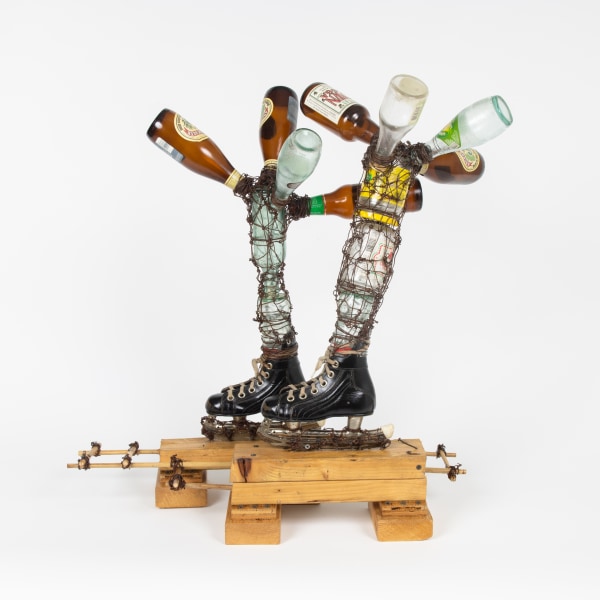
29.8.22 - Mark Godfrey, 'Mettere al mondo il mondo'
Private view: 1 October, 12-8pm
Exhibition dates: 4 October - 23 December 2022
Thomas Dane Gallery
-

25.6.22 - Opening today: Abraham Cruzvillegas at Les Tanneries - Centre d'art contemporain
Abraham Cruzvillegas
éclat
Private view: 25 June, from 2.30pm
Exhibition dates: 25 June - 28 August 2022
Les Tanneries Centre d’Art Contemporain
234 Rue des Ponts
45200 Amilly
France
-

04.12.2020 - Abraham Cruzvillegas: Curator Culture Talk, The Bass Museum of Art, Miami
Abraham Cruzvillegas: Curator Culture Talk, The Bass Museum of Art, Miami
Rethought, Restored, Regifted, Remade: A Conversation on Reconnecting with Everyday Life
Abraham Cruzvillegas will be in conversation with Elena Reygadas and moderated by writer and activist Tom Healy. The panel conversation will take place online via YouTube, viewers can watch live here.
Sunday, 6 December, 12pm (ET)
-
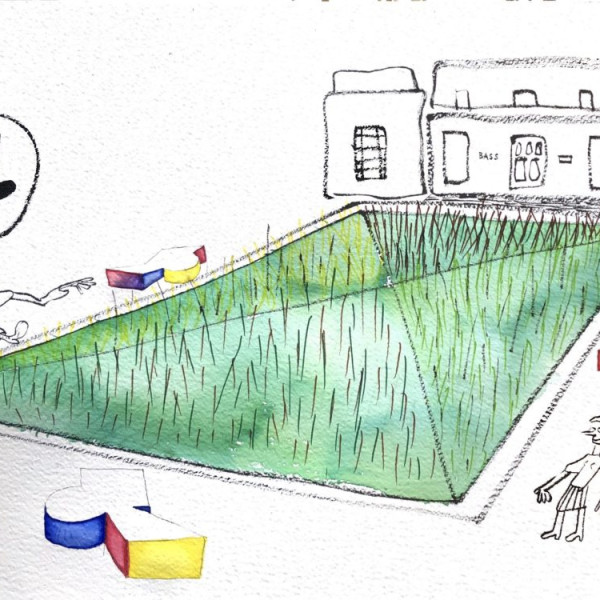
26.11.2020 - Abraham Cruzvillegas: 'Auga dulce', The Bass Museum of Art
Abraham Cruzvillegas: 'Auga dulce', The Bass Museum of Art
Extending from Collins Avenue along the central promenade of the park leading up to the museum entrance, Agua dulce, a large-scale sculptural installation, encompasses nearly 14,000 square feet. Commissioned by the museum, the project will bring the artist’s philosophy of autoconstrucción. Utilizing numerous species of flora, fauna and mineral; performers mimicking native birds; and seating that the artist constructed with locally sourced materials, Agua dulce will form a plant environment in front of the museum, free for the public to enjoy. Through collaborative research with local experts on native flora, Cruzvillegas selected around 23 different species to create the installation of more than 1,000 plants. Many of the included species, like the Salix Caroliniana (Coastal Plain Willow), have medicinal properties and are regularly used by the Seminoles, introducing notions of care and restoration to the installation.
Exhibition dates: 29 November 2020 - 18 April 2021
-
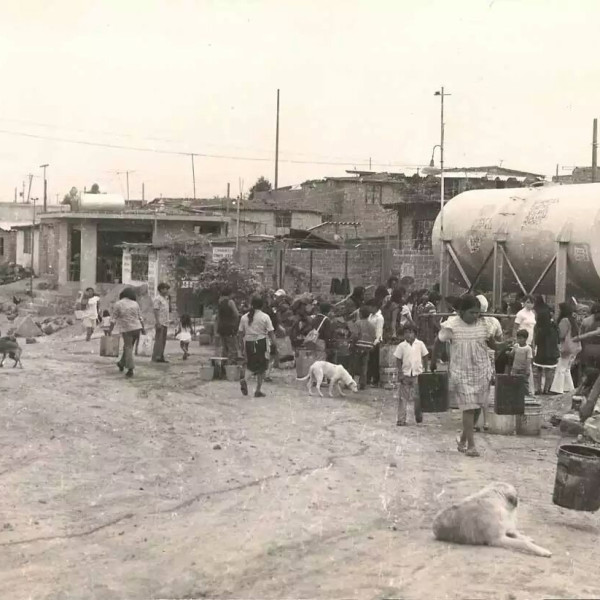
17.11.2020 - Abraham Cruzvillegas: Agua Dulce, Online Lecture, Städelschule, Frankfurt
Abraham Cruzvillegas: Agua Dulce, Online Lecture, Städelschule
Attempting to describe a personal methodology for making art, the talk will gravitate around a new project to be presented soon at The Bass Museum in Miami, sharing also references of previous projects presented in diverse institutions and galleries in the recent years. All boundaries and limitations, old and new, related to environmental, political, social and cultural elements, used as material, language and discourse, will be discussed as well. This may include approaching local resources vs global strategies, the flow and the speed of digital platforms vs nature slow growth, accessibility, broken paradigms, migration and pollination, alchemic transmutation and some other simultaneous failures.
The lecture will be held over Zoom, viewers can register in advance here.
Tuesday, 17 November, 7pm (CET; 6pm GMT)
-

29.07.2020 - Abraham Cruzvillegas: Online Seminar, Museu de arte de São Paulo
Abraham Cruzvillegas: Online Seminar, Museu de arte de São Paulo
Abraham Cruzvillegas will take part in the third online seminar at Museu de arte de São Paulo (MASP). The seminar is part of a long-term project that anticipates the program of exhibitions, lectures, workshops, publications and courses at MASP dedicated to Indigenous Histories in 2023.
The seminars also aim to present and discuss the richness and complexity of indigenous materials and immaterial cultures, their philosophies and cosmologies, in addition to the challenges and possibilities of working with these fields, especially in the context of a museum.
Wednesday, 29 July, 11am-3:30pm
-
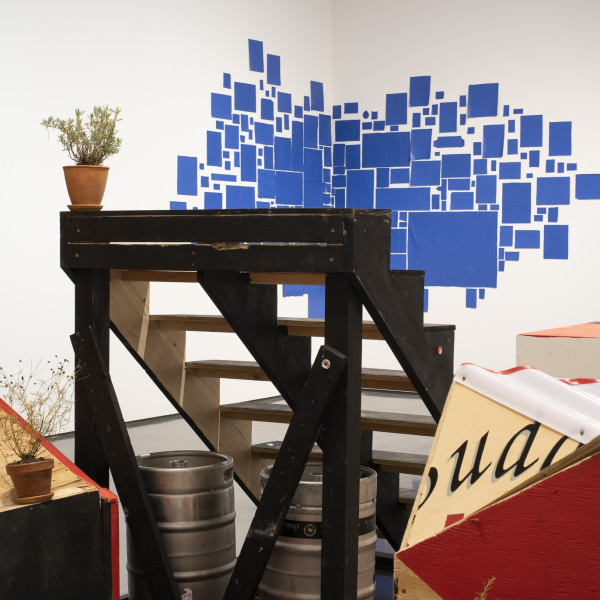
29.05.2020 - Abraham Cruzvillegas: Live Instagram Conversation, Aspen Art Museum
Abraham Cruzvillegas: Live Instagram Conversation, Aspen Art Museum
As part of the Aspen Art Museum's weekly virtual program Slow Look Live, Abraham Cruzvillegas will be in conversation with Rachel Ropeik via instagram live.
Friday, 29 May, 4pm MT (11pm BST)
-
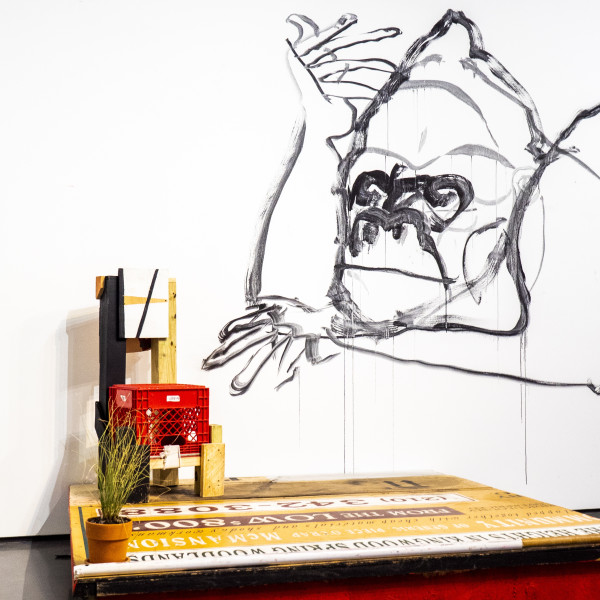
28.11.2019 - Abraham Cruzvillegas: AuTOIconstruction performance, Musée d'Art Moderne de Paris
Abraham Cruzvillegas: AuTOIconstruction performance, Musée d'Art Moderne de Paris
As part of the exhibition YOU at Musée d'Art Moderne de Paris, Abraham Cruzvillegas presents AuTOIconstruction, an evening of art and poetry, inviting volunteers to read aloud texts written by Cruzvillegas since 2008, while he builds a sculpture, composed of recycled materials collected in the museum, which will then be destroyed in front of the public during this same event.
Thursday, 28 November, 7:30-9:30pm
Musée d'Art Moderne de Paris
Palais de Tokyo
11 avenue du Président Wilson
75016 Paris
-

14.10.2019 - Abraham Cruzvillegas: Hi, how are you, Gonzo?, Aspen Art Museum
Abraham Cruzvillegas: Hi, how are you, Gonzo?, Aspen Art Museum
Aspen Art Museum
637 East Hyman Avenue
Aspen, Colorado 81611
18 October 2019 - 26 January 2020
-
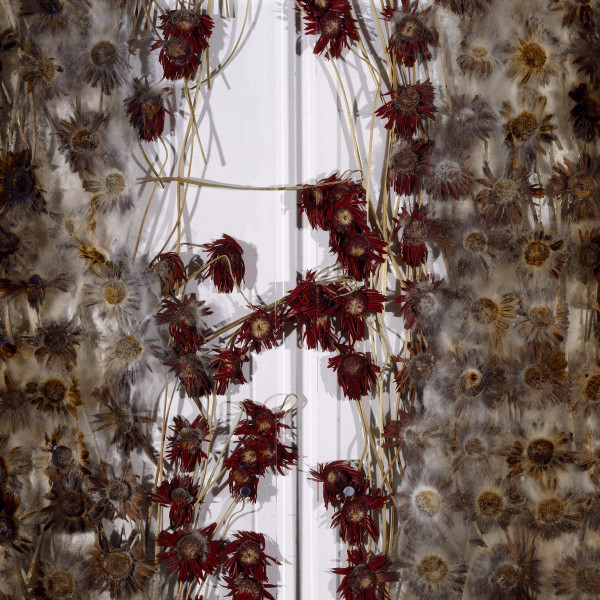
12.06.2019 - Abraham Cruzvillegas, Anya Gallaccio, John Gerrard, Jean-Luc Moulène: The Aerodrome, Ikon Gallery, Birmingham
Abraham Cruzvillegas, Anya Gallaccio, John Gerrard, Jean-Luc Moulène: The Aerodrome, Ikon Gallery, Birmingham
This exhibition is dedicated to the memory of Michael Stanley, Curator of Ikon before becoming Director of Milton Keynes Gallery and then Modern Art Oxford, who died tragically in 2012. Co-curated with David Austen and George Shaw and structured loosely on Rex Warner’s 1941 wartime novel The Aerodrome, a book that made a great impression on Stanley, it includes many of the artists he worked with.
Ikon Gallery
1 Oozells Square
Brindleyplace
Birmingham
12 June - 8 September 2019
-

Abraham Cruzvillegas: Sensory Spaces 12 at Museum Boijmans, Rotterdam
Abraham Cruzvillegas: Sensory Spaces 12
Museum Boijmans, Rotterdam
14 October, 2017 - 14 January, 2018
-
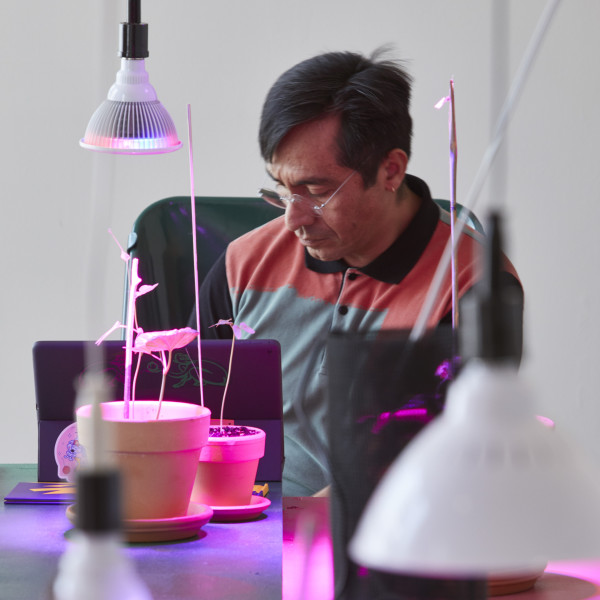
Abraham Cruzvillegas: The Water Trilogy 2: Autodefensión Microtonal Obrera Campesina Estudiantil Metabolista Descalzaat at Fondation d’entreprise Hermès, Tokyo
Abraham Cruzvillegas: The Water Trilogy 2: Autodefensión Microtonal Obrera Campesina Estudiantil Metabolista Descalzaat
21 April - 2 Jul, 2017
Fondation d’entreprise Hermès, Tokyo
-
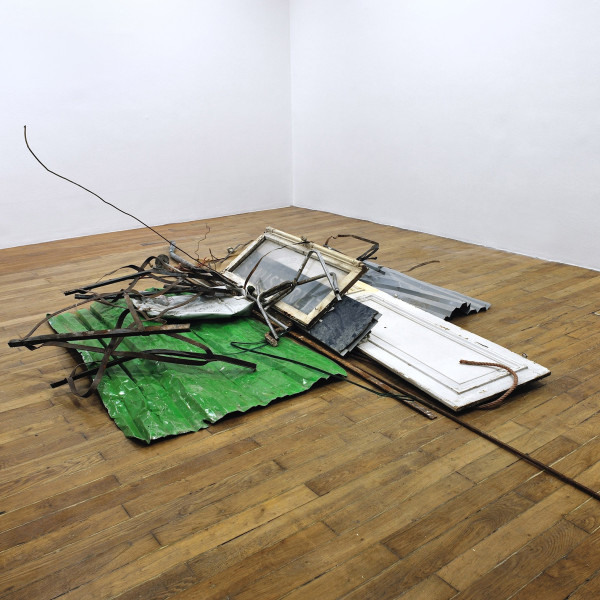
Abraham Cruzvillegas: Autoconstriction Approximante Vibrante Retroflexe at Carré d'Art Museum, Nîmes
Abraham Cruzvillegas: Autoconstriction Approximante Vibrante Retroflexe
Carré d'Art Museum, Nîmes
14 October, 2016 - 19 February, 2017
-

Abraham Cruzvillegas public events on 1 & 2 February at Tate Modern
Artist's Talk: Abraham Cruzvillegas
Tate Modern; Level 1, Turbine Hall
Monday 1 February 2016, 18:30 - 20:00
£12/ £8 concessions
A Lot
Tate Modern; Level 0 Turbine Hall
Tuesday 2 February 2016, 19:00 - 21:00
£8/ £5 concessions
-
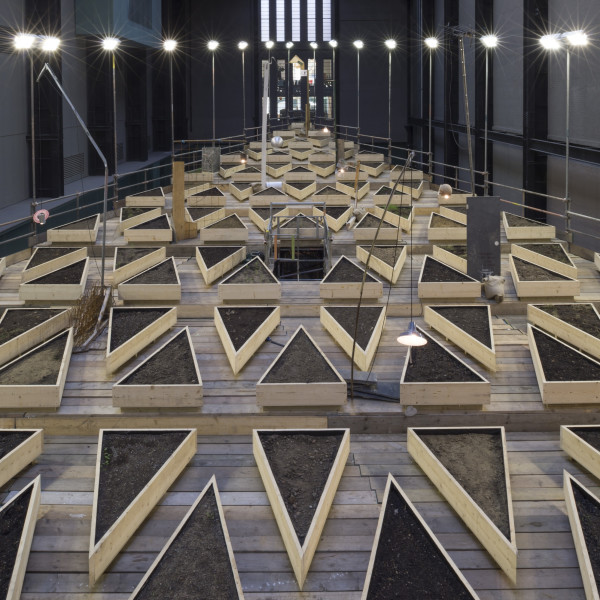
Abraham Cruzvillegas - Recipient of The Hyundai Commission, 2015 in Tate Modern's Turbine Hall
Hyundai Commission, 2015: Abraham Cruzvillegas: Empty Lot
Tate Modern's Turbine Hall
13 October 2015 - 3 April 2016
-

Abraham Cruzvilegas and Michel François: XII Havana Biennale 2015
Abraham Cruzvillegas and Michel François
XII Havana Biennale 2015: Between the Idea and Experience
22 May - 22 June, 2015
-
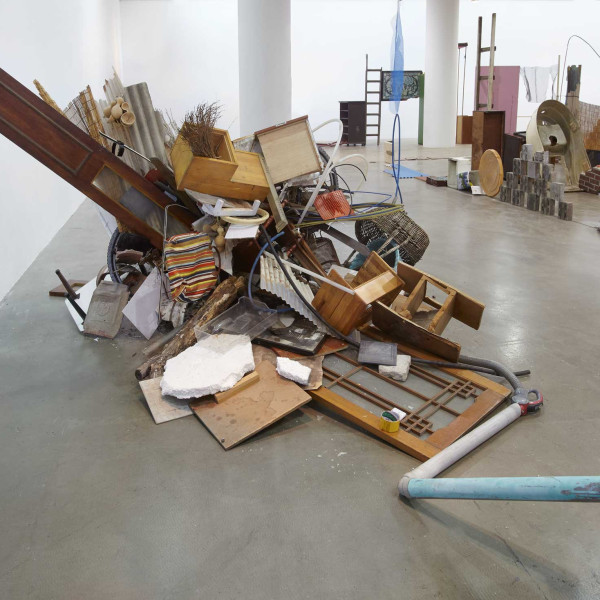
Abraham Cruzvillegas: Autodestrucción8: Sinbyeong at Art Sonje Center
Abraham Cruzvillegas: Autoconstrucción8: Sinbyeong
Art Sonje Center, Seoul
11 April - 26 July, 2015
-
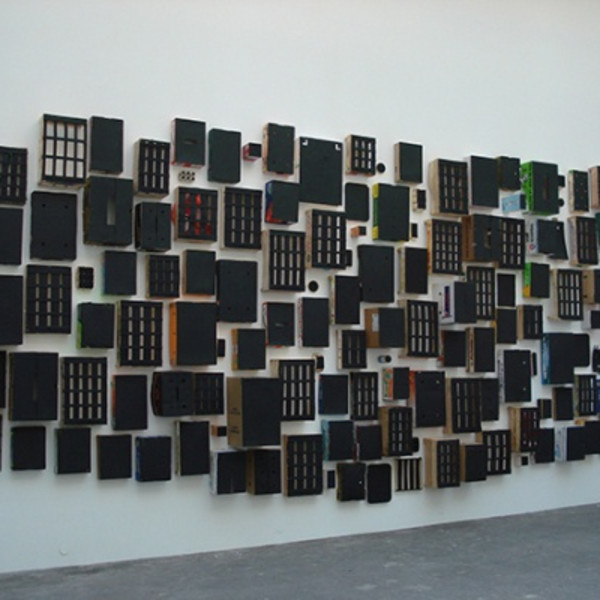
Abraham Cruzvillegas: Autoconstrucción at Museo Jumex & Museo Amparo
Abraham Cruzvillegas: Autoconstrucción
Museo Jumex, Mexico City
November 13, 2014- February 8, 2015
Abraham Cruzvillegas: Autoconstrucción
Museo Amparo, Puebla, Mexico
November 15, 2014- February 16, 2015
-
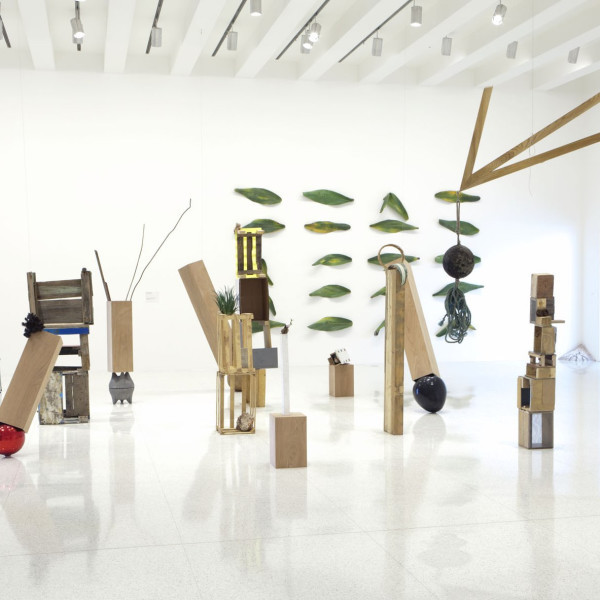
Abraham Cruzvillegas: The Autoconstrucción Suites, Haus der Kunst, Munich
"Autocontrucción" (auto-construction) is the term Abraham Cruzvillegas (born 1968) uses to describe his art, the roots of which lie in the improvised construction methods and techniques of his native Mexico City. In this first major survey of his artistic career to be presented in Europe it can be seen, how Cruzvillegas combines his dynamic sculptural language with natural materials and found objects, blurring the boundaries between art and craft and between industrial and manual production. For Cruzvillegas, the sculptural form is a process of change, action, solidarity, and transformation. Over the past decade, Cruzvillegas has created an impressive body of work that reflects his interest in the forms and matter surrounding Ajusco, a volcanic area south of the Mexican capital.
"Abraham Cruzvillegas: The Autoconstrucción Suites" is organized by the Walker Art Center, Minneapolis, MN, USA, and presented by Haus der Kunst.Major support for the exhibition is provided by the Andy Warhol Foundation for the Visual Arts. Additional support is generously provided by Nelly and Moisés Cosío Espinosa, the Rose Francis Foundation, Gabriela and Ramiro Garza, Eugenio Lopez, Leni and David Moore, Jr., Donna and Jim Pohlad, Mike and Elizabeth Sweeney, and Marge and Irv Weiser.
The exhibition at Haus der Kunst in Munich has been generously supported by Thomas Dane Gallery, London / Regen Projects, Los Angeles / Galerie Chantal Crousel, Paris / kurimanzutto, Mexico City
-

Abraham Cruzvillegas: Artists' Film Club, ICA
Mexican artist Abraham Cruzvillegas makes videos, paintings and sculptures. This screening of Autoconstrucción (2011) draws together his interests in society, class, sex and gender in a video capturing the intimate moments of a spectrum of couples in various locations in a South American city.
Please note that this screening contains adult material.
-
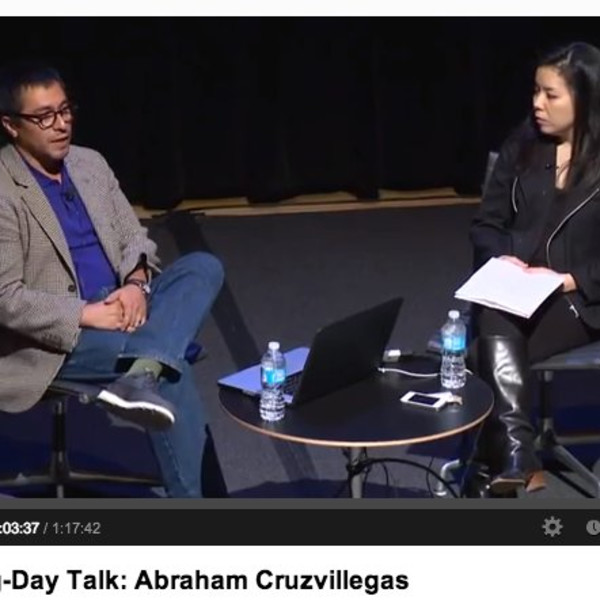
Abraham Cruzvillegas in conversation with Clara Kim
Abraham Cruzvillegas joins exhibition curator Clara Kim for a conversation about autoconstrucción, the artist's practice of giving new life to everyday materials and found objects. More than a method or technique, he calls it "a way of thinking-a way of life." The talk, which includes interludes of music ranging from the artist's own songs to punk, is held in conjunction with the opening of Abraham Cruzvillegas: The Autoconstrucción Suites, a major survey of work by one of the most acclaimed artists from Mexico's vibrant contemporary scene.
-

Artists Installing: Abraham Cruzvillegas
A bit of deconstruction preceded the installation process for Abraham Cruzvillegas: The Autoconstrucción Suites: Prior to the Mexico City-based artist's arrival, all the non-load-bearing walls in the Target and Friedman galleries-including the one separating the two spaces-have been removed. It's the first time since the Walker expansion opened in 2005 that the galleries have been opened up into one, creating a massive, 9,500 s.f. exhibition space. Cruzvillegas, who traveled to Minneapolis with his wife and daughter, has been on-site the past two weeks preparing the exhibition for Friday night's preview party and its public opening Saturday. Gene Pittman and Olga A Ivanova of the Walker photography department have been tracking the installation process, capturing the space as it changes and the artist as he works.
-
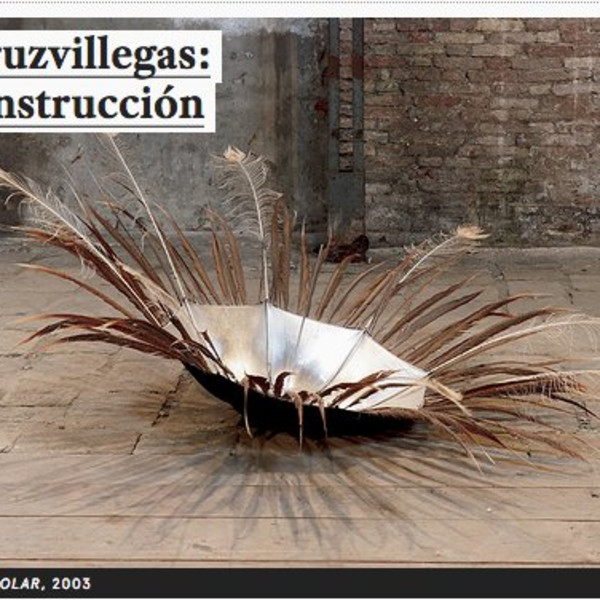
Abraham Cruzvillegas: Walker Art Center, Minneapolis
Minneapolis, January 10, 2013-The Walker Art Center will presentAbraham Cruzvillegas: The Autoconstrucción Suites, the first in-depth contextual exhibition of Abraham Cruzvillegas, one of the most important artists to come out of a burgeoning art scene in Mexico City. Informed by the sociopolitical contexts of Latin America, Cruzvillegas (b. 1968) has garnered much attention for his dynamic assemblage sculptures made of found objects. The exhibition will run from March 23 through September 22, 2013.Since the 1990s, Cruzvillegas has developed a riveting body of work-including sculpture, installation, film/video, and theater-that derives from the social and economic realities of his hometown in Ajusco. While his work has been widely presented in Mexico and Europe, his exposure in the U.S. still remains limited. Organized by Walker Senior Curator for Visual Arts Clara Kim, this mid-career survey will focus on the last 10 years of his practice and will feature individual sculptures and expansive sculptural environments, as well as recent experiments in video, film, and performance. Following the Walker's presentation, the exhibition will embark on an international tour to the Haus der Kunst in Munich in early 2014 and the Jumex Foundation in Mexico City and Museo Amparo in Puebla who will jointly present the exhibition in Mexico in fall 2014.
Interested in what he calls autoconstrucción or "self-construction," Cruzvillegas roots his practice within the urban landscape of his childhood home, where structures are in a constant state of change as materials become available and as necessity dictates. The conceptual framework and ideology of his dynamic sculptural work begins here. While echoing art historical precedents (Duchampian transformation of everyday objects, arte povera's use of impoverished materials, and the uncanny compositions of assemblage), Cruzvillegas employs improvisation and alternate economic systems that privilege craft over art, the handmade over the manufactured, and processes that necessitate "making do" or learned, communal behavior. This point of departure becomes a model for a way of building out of scarcity and a metaphor for the construction of the artist's own identity.
Developed in close collaboration with the artist, the exhibition will include an important body of sculptures first exhibited at the 2003 Venice Biennale, in a section titled Everyday Altered curated by Gabriel Orozco; a series of sculptural installations created during a six-year period of residencies; and more recent experiments that expand his thinking onautoconstrucción through film (developed with a film cooperative), video (in which the artist's parents narrate their own stories in the form of oral history), performance (collaborative musical and action-based theater), and a source material archive room. Shown together for the first time, the exhibition will illustrate Cruzvillegas's contributions, and motivations and influences that inform his thinking, as well as his commitment to social and political realities that shape everyday lives.
-

Prime Matter: Abraham Cruzvillegas on “Autoconstrucción”
"I use 'dead' things, or materials people think of as garbage," says Abraham Cruzvillegas, "and give them a new use by revealing instead of hiding their nature." Over the past 10 years, the Mexico City-based artist has become recognized as a key figure among his generation, bringing a fresh conceptual strategy to the use of found materials and improvisational processes. The result is a riveting body of work that he calls autoconstrucción, or "self-construction," made from found objects to which he's given new life while working in urban and rural environments in Mexico City; New York; Paris and Saché, France; Glasgow, London, and Oxford, UK; and Gwangju, South Korea.
Each of these commonplace components contributes its own striking character and seemingly precarious form to a sculpture or installation. Here, the artist sheds light on his practice and how it underpins his artistic vision while also serving as a metaphor for the construction of his own identity. Abraham Cruzvillegas: The Autoconstrucción Suites is the first major exhibition to focus on this multifaceted project.
Origins
The autoconstrucción concept comes from a building technique that is led by specific needs of a family and by the lack of funds to pay for constructing an entire house at once. People build their own homes slowly and sporadically, as they can, with limited money, with the collaboration of all family members and the solidarity of neighbors, relatives, and friends. Houses show the autoconstrucción process in their layers, through which it is possible to experience their transformations, modifications, cancellations, and destructions; they evolve according to changes in the lives of their residents.
Aesthetic decisions are intertwined with the ability of the builders to use anything available or at hand, depending on place, circumstance, or chance. The combinations of materials and hybrid construction strategies are very rich and diverse. Autoconstrucción is not a weekend hobby; it's not bricolage or DIY culture-it's a consequence of unfair wealth distribution. As opposed to massive building projects, it points to an autonomous and independent architecture that is far from any planning or draft: it's improvised.
While this kind of building happens all around the world, as in Brazilian favelas or South African shanty towns, in my personal experience I lived with autoconstrucción during the first half of my life, witnessing the evolution of my parent's house in Ajusco, south of Mexico City. This is a land of volcanic rock that was settled starting in the early 1960s by immigrants from the countryside looking for a better life in the big city.
Bit by bit, they started building houses with lava stones and recycled materials gathered in other neighborhoods. For years there was no water and in general, no services at all. Fighting for this land to become property, as well for streets, access to electricity, etc., became an everyday activity. Women became leaders in those movements, along with young guys and children, while men were working, many of them as construction workers in so-called modern Mexico.
When I Started to Use It
I have appropriated the term "autoconstrucción" as a name for all my work since 2007, when I improvised a whole exhibition in New York, working only with materials found around a gallery. I was attempting to reproduce the dynamics of autoconstrucción-rather than represent the results, I wanted to activate the process. I started working with the idea as a personal fact (and not as a chosen subject matter) that had been underlying my work since 1999, when I took many pictures of the houses in my neighborhood, the volcanic rock there, and details of my parents' house.
Then I wrote the story of my own experience, what I witnessed all those years, without nostalgia- just facts. This text became a book accompanied by many images, including some lent by neighbors, captured during the early years of the autoconstrucción. It was published in Glasgow, where I was invited by Francis McKee to do a project at theCentre for Contemporary Art. At this point I've made autoconstrucciónsculptures, drawings, paintings, videos, a theatrical play, and a film. Maybe it's time to move to "autodestrucción."
What It Means
As a structure in which everything is possible, autoconstrucción can take shape in infinite and diverse ways. It is a way of thinking more than a method or a technique; it's a way of life. Improvisation and testing all kinds of combinations according to specific needs (like expressing oneself) are rules of autoconstrucción, rules that provide absolute freedom. For me, autoconstrucción is the most authentic type of creativity, because it blooms in the most adverse circumstances. It's pure ingenuity and will, fueled by hermeneutics, use, function and/or contradiction. It is transparency, simplicity, and change.
System of Production/Ideological Framework
It's easy to perceive the economic and cultural origins of the materials composing an autoconstrucción; and this evidence produces complex readings for both viewers and inhabitants. The will to construct is more important than the aesthetic or economic value of any or all of the materials that might be used. When an object is discarded by a person, it's valueless; for autoconstrucción, it could be seen as prime matter.Autoconstrucción does not deal with garbage, but with prime matter.
Recycling has only recently become a widespread practice, but for centuries in so-called underdeveloped countries, scavenging and harvesting used materials and objects has been an activity. Pepenadores in Mexico pick cardboard, metals, discarded furniture, cans, bottles, paper, and other materials from the garbage in order to give them a new life. They collect, classify, accumulate, resell, and transform these goods. Then a new cycle starts. When I make an artwork with found objects or materials-i.e., aluminum, wood, a forgotten bicycle, my own hair, shark jaws, a cowbell, teeth, a chair, wax, coins, plastic, or sheep dung-theyretain their original qualities and defects.
Even if the piece is later dismantled, its fragments remain as they were before they were incorporated: there is no alchemical transformation, there is no trick or magic. Transformation occurs only in the viewer's mind. And in my hands, of course. So, a stone is a stone before, during, and after the art/architecture approach; it does not represent anything else but a stone being a stone as a stone. When the same stone is removed from the pavement to be thrown over a police barricade, or through the window of a government office, it will still be a stone. But a happy one.
Autoconstrucción meant for me, for many years before making art, a constant struggle with authority, and not only because of growing up in a challenging situation, learning to deal with scarcity, solidarity, roughness, and resistance to the environment, to the local governors, to self-indulgence. Now it's more an ideological consequence in which all my acts involve my genealogy and my future as trying to arrive to a certain degree of consciousness based in all that I've mentioned above.Autoconstrucción is not biographical or anecdotal, is not narrative, it's not thematic or communicative. It is the very expression of survival and work. It's also humorous, ironic, paradoxical, and delirious.
-
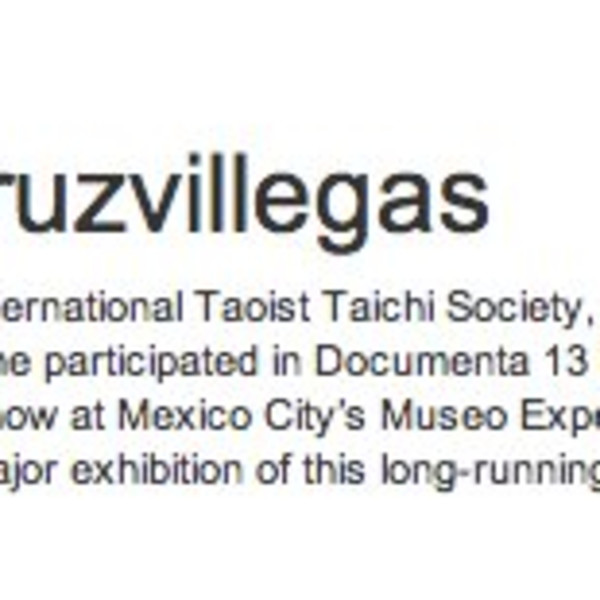
Abraham Cruzvillegas: Top Ten
An artist and member of the International Taoist Taichi Society, Abraham Cruzvillegas lives and works in Mexico City. In the past year, he participated in Documenta 13 in Kassel, won the Fifth Yanghyun Prize in Seoul, and presented a solo show at Mexico City’s Museo Experimental El Eco. On March 23, he opens “TheAutoconstrucción Suites,” a major exhibition of this long-running project at the Walker Art Center in Minneapolis.
